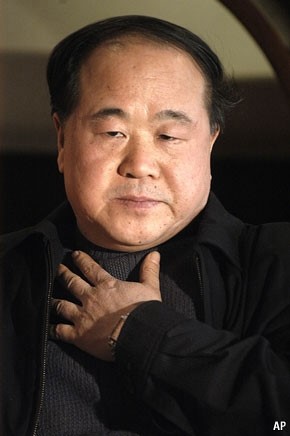

 字體:小 中 大
字體:小 中 大 |
|
|
|
| 2019/01/14 11:36:25瀏覽58|回應0|推薦0 | |
The 2012 Nobel prizesGood eggsPrizes are awarded for work on stem cells, quantum mechanics and cell signallingOct 13th 2012 | from the print edition
THIS year’s Nobel prize for medicine went to Sir John Gurdon and Shinya Yamanaka (both pictured above) for a crucial discovery in stem-cell science: how to make what are known as pluripotent stem cells from ordinary body cells. What the citation did not say was that this work also allows clones to be made from adult animals, potentially including people. A stem cell is one that can differentiate into daughter cells specialised for particular functions, and all the cells in a body are thus derived from stem cells. That includes the stem cells themselves, which derive from “ur” stem cells found in embryos. These embryonic stem cells are the pluripotent ones, meaning they can turn into many (sometimes all) other sorts of cell. In this section Pluripotent embryonic stem cells are of great value to researchers but, if the embryos they come from are human, their use is controversial. This controversy, indeed, was what had originally stimulated Dr Yamanaka to start his investigations, in the hope that embryonic cells might no longer be needed. Also, if such cells are ever to play a useful role in medicine (perhaps for repairing damaged tissue), then they will have to be available in bulk—and ideally in a form whose DNA matches that of the recipient. Sir John and Dr Yamanaka have both conducted work that should help make this possible. Sir John’s prize-winning study, published half a century ago, in 1962, when he was at Oxford, was to transplant the nuclei of cells from adults of a frog called Xenopus laevisinto enucleated eggs of that species. The eggs in question then developed into healthy adults. This showed that DNA is not altered during embryonic development, at least in Xenopus. (That was subsequently shown to be true in other species, too.) It therefore suggested it might be possible to get an entire adult cell to perform a similar trick, without involving an egg at all. That was what Dr Yamanaka did. He and his colleagues at Kyoto University managed to insert extra copies of four crucial genes into adult mouse cells. These genes each encode a protein of a type known as a transcription factor. Such factors control the expression of DNA. Together, these particular four can trick a cell into thinking it is part of an embryo. In the first experiment, conducted in 2006, Dr Yamanaka did not produce complete mice, but he did turn the adult cells into pluripotent stem cells. Subsequent work has produced embryos which, if transplanted into the womb of a female mouse, will go all the way to adulthood. And in 2007 Dr Yamanaka managed to activate the same four genes in adult human cells, thus generating pluripotent human stem cells. In principle, that opens the door to human cloning, though no one (as far as is known) has yet tried this—and in most countries such an experiment would be illegal. It also opens the door, though, to bespoke tissue repair, since it could allow cells of whatever type were desired to be grown from, say, a few skin cells and then transplanted back into the donor without risking an adverse reaction from his immune system. How that would work in practice remains to be seen. But if it works well then Sir John and Dr Yamanaka may turn out to have been the pioneers of a whole, new field: regenerative medicine. Trappings of success
The physics prize went to two cat hunters. The feline in question is Schrödinger’s cat, and the prize-winners are Serge Haroche of the Collège de France, in Paris, and David Wineland of America’s National Institute of Standards and Technology. Erwin Schrödinger’s famous puss—famous for being both alive and dead at the same time—was born in 1935. It was part of a thought experiment intended to illustrate the bizarre nature of the quantum world, in which particles can persist in two states at once and, as a consequence, a cat can be both dead and alive. However, the cat (or, rather, subatomic particles that behave like the cat) has proved hard to hunt down in practice because such superpositions of states are fragile and easily disrupted phenomena. Superposition is, nevertheless, crucial to the idea of building what is known as a quantum computer. Such a device would be able to carry out many calculations in parallel, with each of the superposed states acting as part of the calculation. But the computer would work only if the operator could interact with it without destroying the superposition. Dr Haroche and Dr Wineland led independent teams which, beginning in the 1980s, devised ways to measure and manipulate particles while preserving superposition. Dr Haroche worked on photons (the particles of light and other forms of electromagnetic radiation). Dr Wineland worked on atoms. Dr Haroche trapped his photons by getting them to bounce back and forth between two tiny superconducting mirrors. He then “entangled” them (another weird quantum process) with what are known as Rydberg atoms. A Rydberg atom is one whose outer electrons have been tweaked to make it about 1,000 times bigger than a normal atom, and the process of entanglement means that measuring the atom reveals the quantum state of the photon (just how dead and alive the “cat” is), while leaving the photon itself intact and thereby preserving its superposition. Dr Haroche thus used atoms to probe photons. Dr Wineland, meanwhile, did the opposite. He used photons (in the form of carefully calibrated pulses of laser light) to probe atoms. The atoms in question were stripped of their outer electrons and trapped in an electric field, in a vacuum, at extremely low temperatures. The pulses served to cool them even further, by settling them into their lowest possible energy states, and then to nudge them into a superpositionof two different energy states. This let them stand in for the mythical cat. Quantum computers remain science fiction, though Dr Wineland’s group and others have managed to perform a few primitive calculations with trapped atoms, in order to prove the point. Dr Wineland has, however, built a working clock with his atoms—and it is the most accurate clock in history. The escapement of this clock consists of two entangled atoms, one of which is used to read the inherent vibrations of the other. Those vibrations can be measured so precisely (and without interruption, because entanglement is not broken) that Dr Wineland’s clock would, had it been set running at the beginning of the universe, 13.7 billion years ago, be off today by only about five seconds.
The chemistry prize, as is now almost a Nobel tradition, went for work that might equally have won one of the other two—in this case the medicine prize. The laureates were Robert Lefkowitz of Duke University and Brian Kobilka of Stanford, who between them laid the groundwork for the study of what are known as G-protein-coupled receptors. A G-protein-coupled receptor is a protein that floats in a cell’s surface membrane. Its job is to pass signals from the outside world to the cellular interior. It does this by interacting with a small molecule such as adrenalin (known as a ligand), in a way that causes its shape to change. That shape-change releases into the cell a piece of a second protein, known as a G-protein (because it likes to bind to molecules containing a substance called guanine), that had previously been attached to the part of the receptor that is inside the cell, below the membrane. This release, in turn, stimulates a chain of chemical reactions which cause the cell to change its behaviour in some way. Exactly which way depends on which G-protein is released, which depends on which receptor was tickled, which depends on which ligand did the tickling. Given that around 1,000 different G-protein-coupled receptors have (thanks to the Human Genome Project) now been discovered, the result is a sophisticated system whereby cells can regulate each other by secreting appropriate ligands. Hitting the G-spot This web of receptors also provides a rich supply of drug targets. For example, nine sorts of G-protein-coupled receptor respond (in different ways) to adrenalin or its cousin noradrenaline. By crafting drugs known as beta-blockers, which interact mainly with just one of these (a version of the beta adrenergic receptor), pharmacologists have devised a way of mimicking some of adrenalin’s functions (those concerned with regulating the heart) without stimulating others, such as the fight-or-flight reaction in the brain. Knowing all of the receptors affected by adrenalin enables researchers to tailor drugs in ways that minimise undesired interactions, and thus to reduce the risk of side effects. Dr Lefkowitz’s roles in this story were first to identify several receptors using radioactive ligands, and then to clone, in 1986, the gene for beta adrenergic receptors—the first time this had been done for any G-protein-coupled receptor gene. The other eight quickly followed. Dr Kobilka, who worked alongside Dr Lefkowitz before he moved to Stanford, then discovered the structure of beta receptors using X-ray crystallography. He confirmed that their amino-acid chains weave in and out of the cell seven times, a pattern repeated in all G-protein-coupled receptors (the molecules are sometimes also referred to as seven-transmembrane receptors). The consequence has been a revolution in medical understanding, for it is now known that about half the drugs on the market work by interacting with G-protein-coupled receptors. from the print edition | Science and technology · Recommended · 12 · Good eggs Oct 18th 2012, 09:34
This time’s three kinds of natural sciences prize winner intends to engross the fundamental work and then successfully explore the new territory. I am familiar with this year’s all of issue from my childhood, especially about stem cell because I know some Japanese researchers like Susumu Tonegawa of 1987’s medicine (the diversity of antibody) and Shirakawa Hideki of 2000’s chemistry (the plastics conducting electricity, of molecular electronics). Recently, Dr. Tonegawa achieved research of neurology, as Time Magazine reported in 2006, also leading some heat of science-researching in the world.
Stem cell can be used for the form of protective or reborn tissue. After the massive merchandising from a decade ago, the application of stem cell in medical care or another private use, like umbilical cord blood, encourage more relative research and flow of capital, though these are not mature enough. Besides the four-gene method, deriving critical protein which “cheats on” most of cell (cell therefore does embryo), Shinya Yamanaka rectified the technique of stem cell concerned in case of rejection. His development of pathway, from John Gurdon’s, gives the world ideas for advanced research of stem cell.
Then, the argument of light whether it consists of energy or matter had been unsettled down. Since Max Planck debuted the quantum theory, the following Albert Einstein and Louis de Broglie respectively created the theory “the effect of photoelectron” and “the alteration of matter-wave”. Later with regard to light, the sayings of matter, or photons, has been more taken than wave for the rational experiment and the derivation of formula. American Arthur Holly Compton also support their theory by constructing a formula discussing the alteration of both kinds of light.
About 2000, the topic of particle physics was popular among the several kinds of fields. Quack and neutrino cannot satisfy the researchers. With the trend of millennium, particle physics depends on the higher calculus and higher interest, having the advanced theory put forward. In 2000, I have read relative report of photons concerned from “cat” particle, in Japan’s Newton Magazine, which Serge Haroche and David Wineland “developed” with the intention of slowing the photon while preserving the certain energy state (superposition). Their successfully “catching” photon by atom or atom by photon, ensuring the way of controlling particle, have physics offer the possible answer of some myth.
Well, it hasn’t been short time since G protein becomes the common sense in cell biology. The message-delivered pathway, divided into two form - the lipid-inclined and the protein-inclined - has the use of accepting the order of exterior cell to continue the work of metabolism. G protein (guanine nucleotide-binding protein), the key element of G protein-coupled receptors (GPCRs), is the receptor or “interface” between beta-adrenergic receptor and adenylyl cyclase, playing a role of initiating a series of intracellular reactions. Beta-adrenergic receptor has exposed portion (N-terminus) of extracellular membrane, for stimulation of epinephrine from resting to stimulated state. Besides, G protein and adenylyl cyclase, on the intercellular membrane (C-terminus), are the second and third location through the pathway of message.
From the attachment to epinephrine, the receptor gets G protein dissociated and then a part of G protein goes attaching adenylyl cyclase. Therefore, the activated adenylyl cyclase breaks ATP into cAMP, continuing to increase heart rate, to dilate blood vessels in skeletal muscle and to break down glycogen to glucose in the liver. The pathway of message-delivering can be used for medical treatment. Because GPCRs play specific roles in human disease, they have provided useful targets for drug development. Nowadays, more than 1,000 kinds of GPCRs are discovered for sure, which differ from each other for the ligand or some affiliation (the idea is like gluco-protein), promoting the progress of medicine and health care. Robert Lefkowitz and Brian Kobilka’s big findings with message-delivering mechanism, indeed, should have honored by Nobel Prize more earlier.
In the aspect of national identity, American still get the more honor of academic advantage in the world. In addition, owning the advanced technology in the world, Japan get one seat. Dr Yamanaka’s process of discovery is like Dr. Shirakawas - carrying out the routine of experiment but occasionally finding a new tiny. Just like Dr. Shirakawas coagulated black membrane, the polymer which had the ability of conducting electricity, Dr Yamanaka turned the adult cells into pluripotent stem cells and begins a new field from a little idea. Japan depends on good fortune only from routinely work. By the way for Taiwanese, compared to Taiwan’s present worse lagging behind, sometimes, going playing “Peng Chia-chia” (a Taiwanese entertainer) owing to Tweety’s fogging idea can have some surprising good.
Recommended 6 Report Permalink 筆者當年回應的是2012年10月12日的紙本文章。事實上,當年的Babbage在當個禮拜有對科學獎在部落格上進行開放式討論。而2012年第一位中國籍文學獎得主莫言,當年一週後也被討論一番。筆者收錄其他四篇。 (未完成) Science and technologyThe Nobel prize for physiology or medicineGood eggsOct 8th 2012, 12:06 by G.C.
THIS year’s Nobel physiology prize goes to Sir John Gurdon and Shinya Yamanaka for a crucial discovery in stem-cell science—how to make what are known as pluripotent stem cells from ordinary body cells. What the citation does not say is that this work also allows clones to be made from adult animals, potentially including people. A stem cell is one that can differentiate into daughter cells specialised for particular functions, and all the cells in a body are thus derived from stem cells. That includes the stem cells themselves, which derive from “ur” stem cells found in embryos. These embryonic stem cells are the pluripotent cells, meaning they can turn into many (sometimes all) other sorts of cell. Pluripotent embryonic stem cells are of great value to researchers but, if the embryos they came from were human, their use is controversial. Also, if such cells are ever to play a useful role in medicine (perhaps for repairing damaged tissue), then they will need to be available in bulk—and ideally in a form whose DNA matches that of the recipient. Sir John and Dr Yamanaka have both conducted work that should help make this possible. Sir John’s prizewinning study, published half a century ago, in 1962, when he was at Oxford University, was to transplant the nuclei of cells from adults of a frog called Xenopus laevisinto enucleated eggs of that species. The eggs in question then developed into healthy adults. This showed that DNA is not altered during embryonic development, at least in Xenopus. (That was subsequently shown to be true in other species, too.) It thus suggested it might be possible to get an entire adult cell to perform a similar trick, without involving an egg at all. That was what Dr Yamanaka did. He and his colleagues at Kyoto University managed to activate four crucial genes in adult mouse cells. These genes each encode a protein of a type known as a transcription factor, which controls the expression of DNA. Together, they trick the cell in question into thinking it is part of an embryo. In the first experiment, conducted in 2005, Dr Yamanaka did not get complete mice, but he did turn the adult cells into pluripotent stem cells. Subsequent work by his group and others then produced embryos which, if transplanted into the womb of a female mouse, will go all the wayto adulthood. Finally, in 2007, Dr Yamanaka managed to switch on the same four genes in adult human cells, and thus generated pluripotent human stem cells. In principle, that opens the door to human cloning, though no one (as far as is known) has tried this in practice—and in most countries such an experiment would be illegal. It also opens the door, though, to bespoke tissue repair as it would allow cells of whatever type were desired to be grown from, say, a few skin cells and then transplanted back into the donor without risking an adverse reaction from his immune system. How well that would work in practice remains to be seen. But if it works well then Sir John and Dr Yamanaka may turn out to have been the pioneers of a whole, new field: regenerative medicine. « SpaceX goes to the ISS: And this time it means business The Nobel prize for physics: Trappings of
Science and technologyThe Nobel prize for physicsTrappings of successOct 9th 2012, 13:56 by J.P.
IF PHYSICS has a mascot, it must be Schrödingers cat. Famously alive and dead at the same time, it was born in 1935 of a thought experiment to illustrate the bizarre nature of the quantum world, where particles can persist in two states at once. It proved hard to hunt down in practice, however, because such "superposition" is a fragile phenomenon, easily lost upon any hint of disruption. This year the Nobel committee recognised Serge Haroche, from College de France, and David Wineland, of Americas National Institute of Standards and Technology, for their efforts to nab and tame the hypothetical feline—or at least microscopic versions of it. Dr Haroche and Dr Wineland led two independent teams which, beginning in the 1980s, devised experimental methods to measure and manipulate individual particles while preserving some of their quantum weirdness. Dr Haroches approach depended on trapping microwave photons by getting them to bounce back and forth between two tiny superconducting mirrors. Crucially, he was able to hold on to them for a tenth of a second, aeons in subatomic terms and long enough to probe their quantum properties. This he did by introducing a so-called Rydberg atom, tweaked so it curled into a doughnut shape roughly 1,000 times bigger than an ordinary atom, to the mirror-walled cavity. There, it interacted with the photon bouncing around inside. As a result of this interaction, the photon and the atom become entangled. This other strange quantum property means that when the atom is measured, the measurement automatically reveals the state of the photon, while leaving the photon itself intact. By sending a series of Rydberg atoms through the cavity one by one and reading them as they exited, Dr Haroches team was therefore able to track precisely how a photon behaves when in a superposition without nudging it out of that tenuous state. Where Dr Haroche used atoms to probe individual photons, Dr Wineland did the opposite. He employed an electric field to trap beryllium atoms, stripped of their electrons, in a vacuum at extremely low temperatures and then pulsed them with laser light. The carefully calibrated pulses served to cool the ions even further, to their lowest possible energy, and to nudge them into a superposition of two different energy states. Such cooling is necessary to remove any residual heat, which causes particles to shed their magical properties. As with Dr Haroches bouncing photons, the cooled ions remained in superposition long enough to examine them in detail. Dr Wineland also used them to build the worlds most accurate clock. Unlike caesium clocks, whose atomic metronomes oscillate in the microwave range and which have become the standard for precision timekeeping necessary for such things as satellite navigation, Dr Winelands optical clock ticks at the higher frequency of visible light. One version of it uses two trapped ions that are entangled, so that one ticks unperturbed while the other is used to read the time. The upshot is a device accurate to one part in 1017, a hundredfold improvement on the caesium sort and one that, had it started ticking at the time of the Big Bang 14 billion years ago, would today be off by five seconds. Such precision made it possible to pin down subtle effects of small changes in speed and gravity on the passage of time, as predicted by Albert Einsteins theory of relativity. Looking ahead, physicists hope that the methods to conjure up, maintain and control superposition and entanglement pioneered by Dr Haroche and Dr Wineland will usher in the era of quantum computers. Such machines would, it is thought, be capable of solving some of the problems which stump todays machines, like finding prime factors of numbers with hundreds of digits or trawling through large databases at astonishing speeds. An ordinary digital computer manipulates information in the form of bits, which take the value of either 0 or 1. These are represented within the computer as different electrical voltages. Dr Haroches and Dr Winelands work makes it possible to use other properties of particles, like ions energy levels, to construct a quantum analogue of the traditional bit—the qubit. Entanglement, meanwhile, allows more qubits to be added. Each extra qubit in a quantum machine doubles the number of simultaneous operations it can perform. Two entangled qubits permit four operations; three permit eight; and so on. In theory, a 300-qubit computer could perform more simulataneous operations than there are atoms in the visible universe. In 1995 Dr Winelands team was the first to demonstrate a quantum computation with two qubits, and others have improved on that result since. The Nobel committee was quick to point out that quantum laptops are not in the offing just yet. But the laureates efforts have brought them closer to reality. « The Nobel prize for physiology or medicine: Good eggs · Recommended · 29 · inShare6 The Nobel prize for chemistryHitting the G-spotOct 10th 2012, 12:50 by G.C.
THE Nobel chemistry prize, as is now almost traditional, went for work that might equally have won one of the other two—in this case the prize for physiology. The laureates were Robert Lefkowitz of the Howard Hughes Medical Institute and Brian Kobilka of Stanford University, who between them laid the groundwork for the study of what are known as G-protein-coupled receptors. A G-protein-coupled receptor is a protein that floats in a cell’s surface membrane. Its job is to pass signals from the outside world to the cellular interior. It does this by interacting with a small molecule such as adrenaline, in a way that causes its shape to change. That shape change releases into the cell a piece of a second protein, known as a G-protein (because it likes to bind to molecules containing a substance called guanine), that had previously been attached to the part of the receptor that is below the membrane. This release, in turn, stimulates a chain of chemical reactions which cause the cell to change its behaviour in some way. Exactly what way depends on which G-protein is released, which depends on which receptor was tickled, which depends on which external molecule did the tickling. Given that around 1,000 different G-protein-coupled receptors have (thanks to the Human Genome Project) now been discovered, the result is a sophisticated system whereby cells can regulate each other by secreting appropriate small molecules. This web of receptors also provides a rich supply of drug targets. For example, eight sorts of G-protein-coupled receptor respond (in different ways) to adrenaline or its cousin noradrenaline. By crafting drugs known as a beta-blockers, which interact mainly with just one of these (usually, the beta-1 andrenergic receptor), pharmacologists have devised a way of mimicking some of adrenaline’s functions (those concerned with regulating the heart) without stimulating others, such as the fight-or-flight reaction in the brain. Knowing all of the receptors affected by adrenaline enables researchers to tailor drugs in ways that minimise undesired interactions, and thus to cut the risk of side effects. Dr Lefkowitz’s role in this story was to clone, in the mid 1980s, the gene for the beta-2 andrenergic receptor—the first time this had been done for any G-protein-coupled receptor gene. The other seven quickly followed. Dr Kobilka, who worked alongside Dr Lefkowitz before he moved to Stanford, then discovered the structure of the beta-2 andrenergic receptor using X-ray crystallography. He found that its chain of amino acids weaves in and out of the cell seven times, a pattern repeated in all G-protein-coupled receptors (the molecules are sometimes also referred to as seven-transmembrane receptors). The consequence has been a revolution in medical understanding, for it is now known that about half the drugs on the market work by interacting with G-protein-coupled receptors. « The Nobel prize for physics: Trappings of success Babbage: October 10th 2012: Petting Schrödingers cat » · Recommended · 41 以下是經濟學者對文學獎得主莫言的討論的部份。 The Nobel prize in literatureA Chinese Dickens?A prestigious award for a Chinese writer sparks debate about literary freedomOct 20th 2012 | BEIJING | from the print edition
CHINA has long fretted that it lacks a great modern literary voice with international appeal. In 1917 Chen Duxiu, an influential intellectual and later founding member of the Communist Party, asked: “Pray, where is our Chinese Hugo, Zola, Goethe, Hauptmann, Dickens or Wilde?” In recent years this has developed into a full-blown “Nobel complex”. For a period in the 1980s the quest for a Nobel prize in literature was made official policy by the party, eager for validation of its growing power and cultural clout. Now, at last, the Chinese have something to crow about. On October 11th Mo Yan, a Chinese writer, won the 2012 prize. The Nobel committee lauded what it called the “hallucinatory realism” of his works, which mix surreal plots with folk tales and modern history. In this section · »A Chinese Dickens? Mr Mo is the first Chinese citizen to win the coveted prize. Gao Xingjian, a Chinese-born dissident with French citizenship, won it in 2000, but Chinese leaders thought him too political, banned his books and declared the prize had been awarded with “ulterior political motives”. China’s other Nobel laureate, Liu Xiaobo, who won the peace prize in 2010, is serving a long prison sentence for his political writings and activities. Mo Yan is the pen name of Guan Moye, who was born in 1955 into a peasant household in the eastern province of Shandong (his pseudonym means “don’t speak”). He left school aged 12, and started to write after joining the People’s Liberation Army in 1976. He is regarded, together with Yu Hua and Su Tong, as one of the most influential authors to emerge during the 1980s. Mr Mo’s rural stories feature an absurdist brand of magical realism and opaque images which highlight the greed and corruption that prosper under Communist Party rule. His best known works include “The Republic of Wine”, a satire which uses cannibalism as a metaphor for Chinese self-destruction; and “Life and Death Are Wearing Me Out”, the story of a landowner reincarnated in the form of various animals during the Chinese land-reform movement of the 1950s. Home-grown Mr Mo writes within a system of state censorship, but unlike exiled dissident writers—who enjoy recognition abroad but little influence at home—he is widely read and respected within China. He is also a Communist Party member and vice-chairman of the state-run China Writers’ Association. When the Nobel award was announced, Chinese television channels interruptedtheir programming to announce the news. Thousands of China’s microbloggers congratulated Mr Mo. A publisher under the Ministry of Education says it was already planning to include a Mo Yan novella in a school textbook. He has attracted criticism, though, for what some call his cosy relationship with the Communist Party. Earlier this year he contributed to a commemorative edition of Mao Zedong’s infamous “Yan’an Talks on Literature and Art”, a seminal 1942 speech which preached that art and literature should serve the revolution. When asked in the past to comment on the jailing of Mr Liu, the peace prize laureate, he has demurred. Chen Xiwo, a maverick author whose banned short story, “I Love My Mum”, uses incest and matricide as metaphors for the decay of society, believes the prize sends a dangerous message to other Chinese writers that it is acceptable to co-operate with the party. Mr Mo himself has batted away similar criticism, once saying that “censorship is great for literary creation”. And his ability to navigate the system within China, sometimes compromising, sometimes criticising bluntly or obliquely, makes his experience much more representative of life for most people in modern China today. His latest novel, “Frog”, tells the story of a midwife who has been complicit in forced abortions under China’s one-child policy. She has a hallucinatory vision of thousands of frogs, whose croaks sound like the cries of new-born babies. Hardly the stuff of party propaganda. And perhaps the award has given him space to speak more freely: a day after receiving the news, Mr Mo said he hoped that the jailed Mr Liu can “achieve his freedom as soon as possible”. from the print edition | China · Recommended · 34 ·
|
|
| ( 心情隨筆|心情日記 ) |



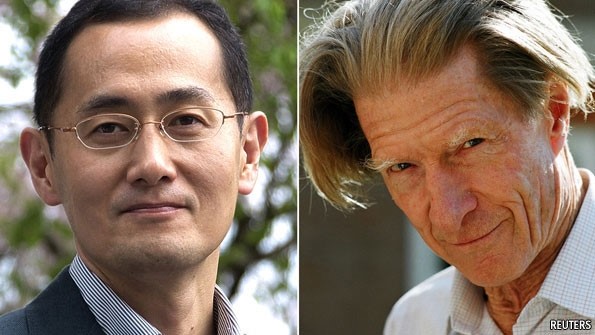
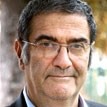 Serge Haroche
Serge Haroche David Wineland
David Wineland Robert Lefkowitz
Robert Lefkowitz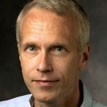 Brian Kobilka
Brian Kobilka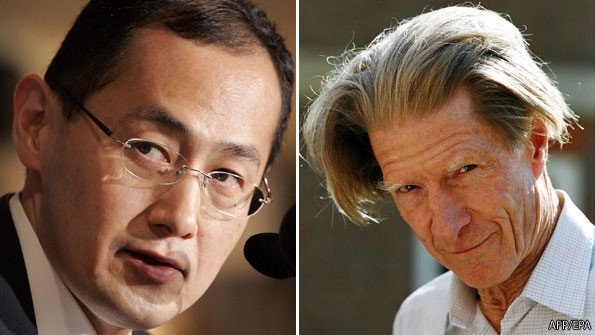

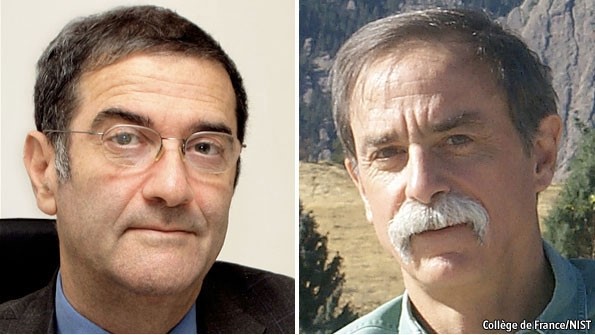
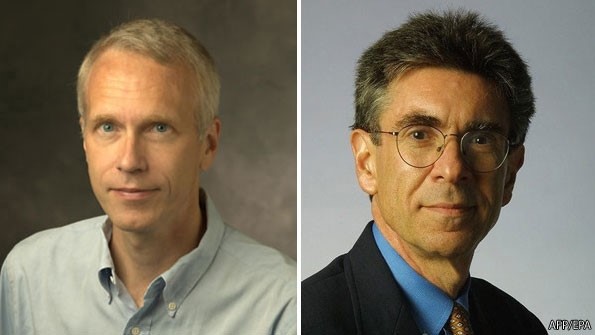 「
「